A new design for eye and brain implants draws its inspiration from nature. UO researchers have grown rodent retinal neurons on a fractal-patterned electrode, one that mimics the repeating branching pattern in which neurons naturally grow. It’s a step closer to making a bio-inspired bionic eye, a longstanding goal for UO […]
An enzyme variant created by engineers and scientists at The University of Texas at Austin can break down environment-throttling plastics that typically take centuries to degrade in just a matter of hours to days. This discovery, published today in Nature, could help solve one of the world’s most pressing environmental problems: what to do with […]
Nipple reconstruction is the last stage in the cosmetic reconstruction of the breast after mastectomy, but no method produces reliable and consistent aesthetic results. This study examined the use of the Biodesign Nipple Reconstruction Cylinder (NRC) during the reconstruction of the nipple after mastectomy.
Patients with a history of breast […]
Scientists from China have recently developed a small four-legged robot—modeled on a rat—that can perform multiple motions in narrow spaces.
Learn more (opens external site)
In response to the changing environment, chameleons can adjust their skin colors to communicate and create disguise during locomotions. By mimicking their behaviors, we present structural-color actuators that can sense the environment and give responses of non-fatigued vivid color alterations and programmable shape transformations. Due to the sensitive vapochromic and robust vapomechanical response properties, these […]
Inspired by spider webs, MIT researchers have devised a new adhesive double-sided tape that could replace sutures in surgery.
Learn more (opens external site)
Airway management is a priority to any caregiver in a trauma scenario. The current clinical gold standard for airway securement is endotracheal intubation (ETI), which involves placement of an endotracheal tube into patient tracheas and pneumatically expanding a cuff for securement. Incorrect performance of this delicate and complex procedure poses significant […]
Although the role of extracellular Ca2+ draws increasing attention as a messenger in intercellular communications, there is currently no tool available for imaging Ca2+ dynamics in extracellular regions. Here we report the first solid-state fluorescent Ca2+ sensor that fulfills the essential requirements for realizing extracellular Ca2+ imaging. Inspired by natural extracellular […]
Through a localized nanocrystallization process using surface mechanical attrition treatment (SMAT), a new method is proposed to build bistable and multistable metallic shells.
Learn more (opens external site)
“Bioinspired electronic whisker (e-whisker) arrays fabricated using pencil on paper are demonstrated for adaptive tactile sensing. The pencil-drawn e-whisker arrays with superior strain sensitivity, fast response (50 ms) and high durability/stability enable to monitor strains, build 3D spatial maps and detailed reconstruct objects’ […]
In the past, scientists have struggled to design quadruped robots that are both adaptable and able to fit into narrow spaces. To combat this issue, a team of researchers have taken rats as their source of inspiration for a new tiny biomimetic robot capable of executing various actions and carrying payloads, […]
Recently, liquid crystal elastomers (LCEs) have drawn much attention for its wide applications as artificial muscle in soft robotics, wearable devices, and biomedical engineering. One commonly adopted way to trigger deformation of LCEs is using embedded heating elements such as resistance heating wires and photothermal particles. To […]
The ocean is largely undiscovered and is possibly the best example of a complex dynamical system. Ocean engineers and mechanical engineers are using advances in bioinspired design to address many problems and how organisms and human-made vehicles move and interact underwater. The ocean’s fluid dynamics, tides, weather patterns, and climate are often unpredictable. Researchers are […]
Head on Collisions
Cockroaches often choose to have head on collisions with obstacles with vertical walls they mean to traverse in order to maintain top speed. They do this as opposed to avoiding a collisions to have a clean transitions up the wall and not perform any destructive acts. As […]
Hydrogels have been extensively used in many fields. Current synthesis of functional hydrogels requires incorporation of functional molecules either before or during gelation via the pre-organized reactive site along the polymer chains within hydrogels, which is tedious for polymer synthesis and not flexible for different types of hydrogels. Inspired by sandcastle worm, we develop a […]
This article details how a certain species of sea sponge naturally demonstrates a larger strength to weight ratio based on its composition compared to the lattice structure that is normally used to provide a strong foundation and support for buildings. As a result, researchers are now looking towards the sponge skeleton […]
Dubbed the Jellyfish Barge for its shape and translucency, this floating greenhouse is capable of growing its own food hydroponically and producing up to 150 liters of fresh drinking water per day. Even more beneficial is its low-cost, easy-to-assemble design that can be implemented in a variety of locations.
Cancer is one of the leading causes of human death, despite enormous efforts to explore cancer biology and develop anticancer therapies. The main challenges in cancer research are establishing an efficient tumor microenvironment in vitro and exploring efficient means for screening anticancer drugs to reveal the nature of cancer and develop […]
Fish fins do not contain muscles, yet fish can change their shape with high precision and speed to produce large and complex hydrodynamic forces—a combination of high morphing efficiency and high flexural stiffness that is rare in modern morphing and robotic materials. These “flexo-morphing” capabilities are rare in modern morphing and […]
Dubbed the Jellyfish Barge for its shape and translucency, this floating greenhouse is capable of growing its own food hydroponically and producing up to 150 liters of fresh drinking water per day. Even more beneficial is its low-cost, easy-to-assemble design that can be implemented in a variety of locations.
The Jellyfish […]
Nakata et al. show that mosquitos detect surfaces using the flow fields caused by the movement of their own wings, and proposed to use this in the navigation of human-made drones. Small changes in air flows can be detected with sensors and used […]
Although bats can see, many species have evolved an unusual way to fly and hunt in the dark—echolocation. To do so, they emit ultrasonic sound waves that bounce off objects and navigate using the resulting echoes. Can this technique be used by people without sight? An innovative start-up in Kazakhstan, Sezual, […]
This research presents a control structure for an omni-wheel mobile robot (OWMR). The control structure includes the path planning module and the motion control module. In order to secure the robustness and fast control performance required in the operating environment of OWMR, a bio-inspired control method, brain limbic system (BLS)-based control, was applied. Based on […]
This article is about a Kingfisher inspired Bullet Train. The design inspired from the kingfisher’s long beak and head allow for the train to move at extremely high speeds. Robertson goes into more detail on the bioinspiration throughout.
Learn more (opens external site)
The article is about biomicry shoes by Marieka Ratsma. They use a bird’s cranium structure to inspire the heel of the shoe. The connection between nature, function, and fashion is extremely interesting.
Learn more (opens external site)
The design of a smart robot for colonoscopy is challenging because of the limited available space, slippery internal surfaces, and tortuous 3D shape of the human colon. Locomotion forces applied by an endoscopic robot may damage the colonic wall and/or cause pain and discomfort to patients. This study reports a Soft […]
Recapitulating avian locomotion opens the door for simple and economical control of legged robots without sensory feedback systems. Specifically, the avian-inspired robot leg, BirdBot, has been developed with the potential for self-engagement and disengagement without sensory feedback control. This design approach embeds “intelligence by mechanics”, effectively sidesteps computational algorithms vulnerable to […]
Scientists at Nanyang Technological University, Singapore (NTU Singapore) have developed a pollen-based ‘paper’ that, after being printed on, can be ‘erased’ and reused multiple times without any damage to the paper.
Learn more (opens external site)
UC Berkeley featured biomimicry
Researchers observed the Woodpecker’s exceptional ability to absorb shock. For reference, they withstand 1200gs of force whereas a human receives 120gs of force in a car crash. In an observation of the Woodpecker’s structure, researchers hoped to biomimic the Woodpecker’s ability to create better shock absorption structures. The researchers concluded that […]
The emerging novel power generation technology of triboelectric nanogenerators (TENGs) is attracting increasing attention due to its unlimited prospects in energy harvesting and self-powered sensing applications. In this review article, we present a comprehensive review of various researches within the specific focus of bioinspired TENGs and TENG enabled biomimetic applications. Various […]
Manta rays are very efficient swimmers which are able to travel at high speed over large distances despite their large sizes. This paper covers the design, experiment and prototype testing of a propulsive mechanism for Robot Manta Ray. The propulsive mechanism and the pectoral fins of the Robot Manta Ray were designed based on some […]
In a review recently published in the Chemical Engineering Journal, researchers discussed the preparation of superior graphene composite coatings using bioinspired techniques.
Learn more (opens external site)
The Meiji University researchers developed a device, Norimaki Synthesizer, that can imitate all kinds of flavory sensations as the subject put the device on their tongue. The manipulation of taster perception is achieved by electrolytes inserted into five gels that control the intensity of five basic flavors: sour, sweet, bitter, salt, […]
Combining engineered flaps with other structures inspired by seagull wings improves lift, reduces stalling in wind energy turbine blades
Learn more (opens external site)
This paper presents a novel meta-heuristic algorithm named Chameleon Swarm Algorithm (CSA) for solving global numerical optimization problems. The base inspiration for CSA is the dynamic behavior of chameleons when navigating and hunting for food sources on trees, deserts and near swamps. This algorithm mathematically models and implements the behavioral steps […]
According to this article, friction is an underappreciated problem in engineering, as it is often responsible for great energy loss within machines and robots. But, in order to combat this, researchers looked into snake skin as a potential model for a new synthetic material to reduce friction. In the most recent […]
Achieving fast and agile swimming still remains extremely challenging for a self-propelled robotic fish due to the constraint of actuator’s propulsion capability. In this article, we report an untethered bioinspired robotic fish, which combines a high-frequency oscillation and a compliant passive mechanism to realize fast swimming, high pitch maneuvers, and even the leaping motion. For […]
Biomimicry in Architecture
This article breaks down historic applications of biological design translated into architecture. Although the term “biomimicry” was coined in the mid-20th century, an early example of bio inspired design was displayed at the 1900 Worlds Exposition in Paris. Architect Rene Binet’s Monumental Gate […]
A bio-inspired auxiliary fishbone-shaped flow field (AFFF) pattern is proposed and designed at the cathode flow field plate (FFP) of polymer electrolyte membrane (PEM) fuel cells, in order to enhance under-rib mass transport and water removal from gas diffusion layer (GDL). The bio-inspired AFFF pattern is numerically […]
The main aim of this research is to demonstrate the potential of surfaces with structural modifications for passive directed fog collection water transport, which might lead to process improvements and reduced resource requirements due to exceedingly controllable transporting of tiny droplets. For this purpose, we analyzed the […]
Learn about our two Decals!
 Click here to find out more about our Fall Bioinspired Design Decal and our Spring Bioinspired Design in Action Decal – ALL MAJORS are welcome.
Click here to find out more about our Fall Bioinspired Design Decal and our Spring Bioinspired Design in Action Decal – ALL MAJORS are welcome.Berkeley BioDesign Community
 Click here to learn about the BioD: Bio-Inspired Design @ Berkeley student organization or here to signup for more info.
Click here to learn about the BioD: Bio-Inspired Design @ Berkeley student organization or here to signup for more info.Search
Student Login

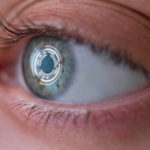
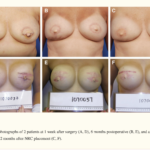
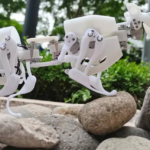
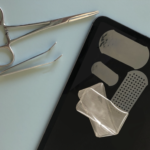
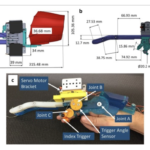
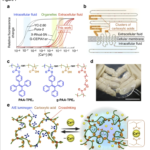
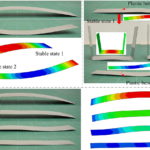
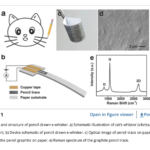
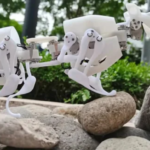
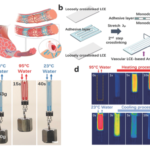
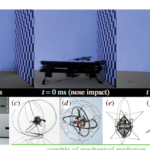
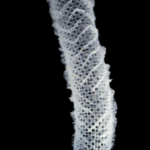
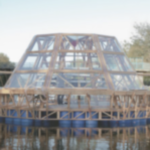
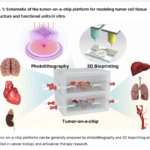
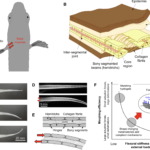
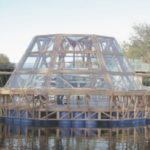
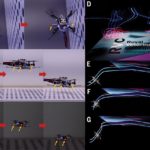
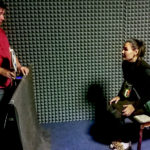
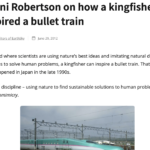
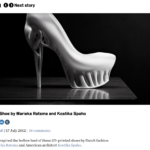
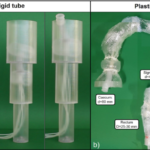
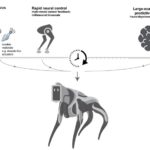
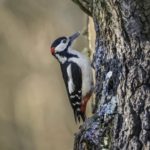
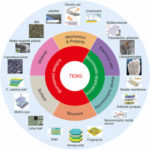
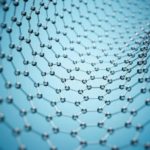
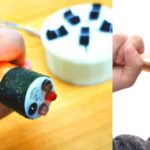
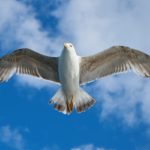
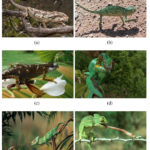
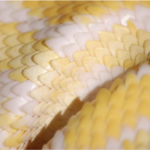

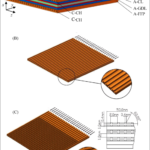
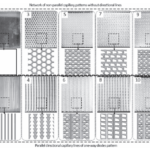


I imagine that the neurological circuits underlying these processes are governed by both 2d spacing maps with their brains as…
to reduce the impact of car accidents, it may be possible to study the force diverting physics of cockroaches to…
you see this type of head-bobbing stability in many avian creatures related to pigeons like chickens. the head ability to…
not like they taught horses how to run! this is an example of convergent evolution where both sea creatures and…
The brain functions in a similar way with neuronal connections. our brains are able to utilize the multiplicity of connections…